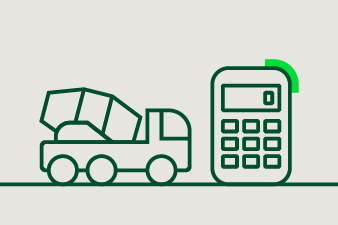What is concrete?
A blend of aggregates bound together by a hydraulic binder
Concrete is an engineering material that simulates the properties of rock and is a combination of particles closely bound together.
It is simply a blend of aggregates, normally natural sand and gravel or crushed rock. These are bound together by a hydraulic binder e.g. Portland Cement and activated by water to form a dense semi homogenous mass.
Because of its general characteristics concrete is sometimes referred to as artificial rock. Concrete is very strong in resisting compression. In use where tensile stresses have to be accommodated reinforcement is incorporated into the concrete to absorb tension. Concrete is the most widely used construction material. It allows flexibility in structural form as it can be moulded into a multiplicity of shapes.
Did you know…
- Concrete is the second most used material on earth after water
- Concrete production contributes 5% of annual anthropogenic global CO2 production.
- Concrete in the middle of the Hoover Dam, opened in 1936, is still drying out!
- The largest ever, unreinforced concrete dome construction is the Pantheon in Rome, which is over 2000 years old
- Cement, if sealed in a thermos flask with water, will reach boiling point
- 99% of all ‘cracked’ concrete is associated with other construction factors and not the material as delivered
- Concrete is an extremely inexpensive material when you consider what it does. For example: 1m3 of concrete = 1000 litres of product. If you were to buy the same volume of paint, you would pay a lot more and it wouldn’t be as durable
- Concrete sets and hardens under water
- Concrete actually has elastic properties
- A ready mixed concrete plant can have in excess of 2000 mix recipes available
